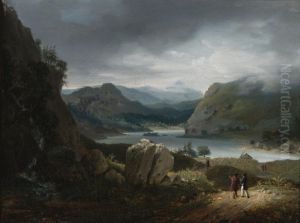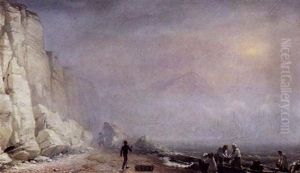Jean Bruno Gassies Paintings
Jean Bruno Gassies was a French painter and illustrator born in 1786 in Bordeaux, France. During his lifetime, France was undergoing significant political and social changes, transitioning from the Ancien Régime through the French Revolution and into the Napoleonic era, which undoubtedly influenced Gassies' work and career.
Gassies began his artistic education at a young age, studying under various local artists. He later moved to Paris to further his training and became a pupil of the renowned French painter Pierre-Narcisse Guérin, who was also the teacher of other famous artists such as Eugène Delacroix and Théodore Géricault. Under Guérin's tutelage, Gassies honed his skills and became proficient in the neoclassical style that was popular during the early 19th century.
Throughout his career, Gassies was known for his landscape paintings, genre scenes, and illustrations. His work often reflected the romantic sensibilities of the time, with a focus on the beauty of nature, historical subjects, and the exploration of human emotions. Despite the popularity of neoclassicism, Gassies was also influenced by the emerging Romantic movement, which can be seen in the emotive qualities of his compositions.
Gassies exhibited his work at the Paris Salon, the official art exhibition of the Académie des Beaux-Arts in Paris, which was the principal showcase for French artists to display their latest creations to the public and potential patrons. His paintings received critical acclaim, and he gained a respectable following among art collectors and enthusiasts of the period.
Unfortunately, Jean Bruno Gassies' life and career were cut short when he died in 1832 at the relatively young age of 46. His body of work, however, has continued to be appreciated by art historians and collectors. While he may not be as widely known as some of his contemporaries, Gassies' contributions to French art during a time of great transformation are still recognized today. His paintings can be found in various art museums and private collections, serving as a testament to his artistic talent and the rich cultural milieu of early 19th-century France.















